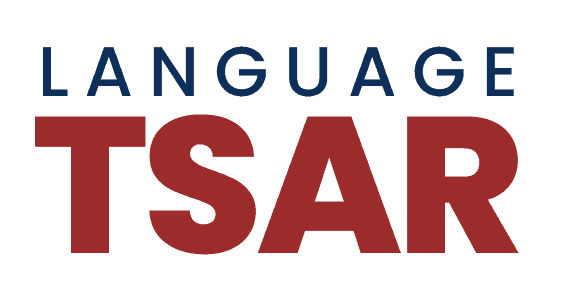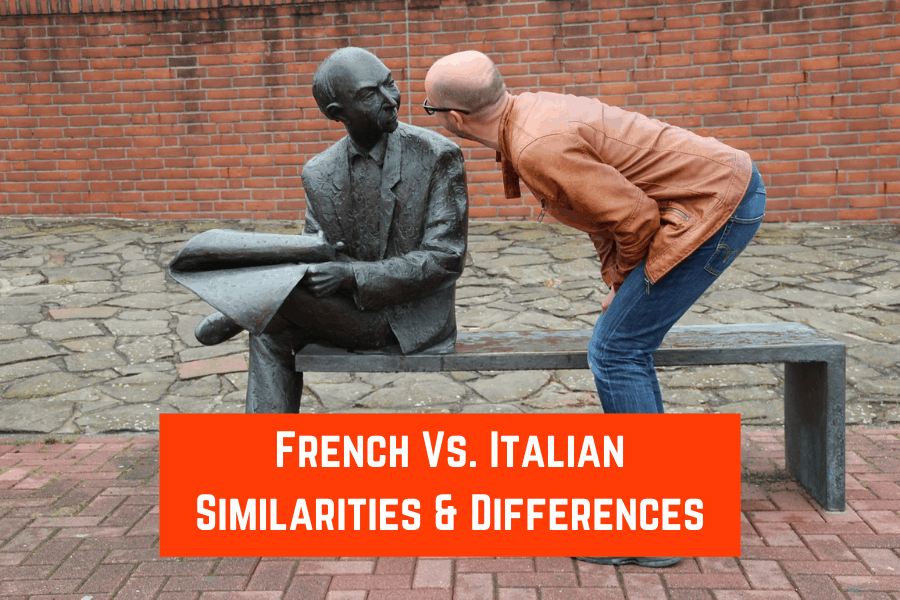I have had the pleasure of studying at university in both France and Italy so can really appreciate both countries’ cultures and languages.
I learnt French on my Erasmus exchange year and it was my first foreign language to learn. My next language after French was Italian as I had fallen in love with the bel paese on a 2-week long trip there at the end of my Erasmus year.
Having learnt both languages in quick succession, I am really aware of how similar and different these two Romance languages are in fact.
Two questions I am often asked are:
- How similar are French and Italian?
- Didn’t you get confused between the two languages when learning them one after the other?
Learning French? Read: Is FrenchPod101 worth it?
In this article, I’m going to answer these 2 frequently asked questions.
Origins of French and Italian
French and Italian are both Romance languages. That means that they are derived from Latin which was the language of the Roman Empire.
With the collapse of the Roman Empire around the 5th century, dialects of Vulgar Latin started to form over time in some of the Roman territories.
Today while a large number of these dialects are still in use, for political reasons there are just a handful of major derived languages that are similar in grammar and vocabulary.
These are official languages of the following European countries:
French (France, Belgium, Switzerland, Luxembourg and Monaco), Italian (Italy, Switzerland, Vatican City and San Marino), Spanish (Spain), Portuguese (Portugal), Catalan (Andorra) and Romanian (Romania and Moldova).
All these languages are mutually intelligible to a certain extent thanks to their common origins.
Italian and French languages share the same history, but their roots are different. The territory of France was inhabited by Gauls and after occupied by Romans, while Italy always remained part of the Roman Empire. So only after the Germanic Wars (which occurred between 113 BC and 596 AD) did the local languages (Visigothic, Burgundian, Alemannic, and Frankish, Romanolo, Veneto) that are different from the Latin slowly start to develop.
Different historic periods and changes provoked the development of new dialects, many of which, still exist today.
So standard Italian is based on Tuscan dialect due to the political and economic situation of the époque but there are also distinct dialects, as Florentine dialect and the Italo-Dalmatian variant with Sicilian and Dalmatian dialects.
On the other hand, Modern French is based on the language of Île-de-France or the langue d’oïl but even today other languages such as Breton, Basque, Occitan (langue d’oc), Alsacian, Flemish and Catalan are still spoken in the different regions of France.
French has spread further across the world than Italian due to France’s relative success as a colonial power. As a result, French is an official language in 29 countries spanning the globe, including the Americas (e.g. Canada), Africa (e.g. Congo) and Oceania (e.g. Vanuatu).
So how different are French and Italian?
The lexical similarity between French and Italian is around 85-90%. That means that almost 9/10s of the two languages’ words are similar but does not mean that they are necessarily mutually intelligible to native speakers due to big differences in pronunciation and syntax.
The Italian alphabet consists of 21 letters (with 5 vowels and 16 consonants) whereas French alphabet consists from 26 letters, as modern English alphabet.
In my experience of observing French speakers and Italians talking in their respective languages to each another, it is not possible for them to have a mutually intelligible conversation even if they speak clearly.
As a native English-speaker who has learnt both languages, I can confirm that it was indeed quite easy to learn Italian after learning French but it was not possible for me to understand spoken Italian comfortably in the beginning, especially because of the numerous Italian dialects that are spoken in everyday life.
Grammatical differences
– In French, subject pronoun is used in writing and speaking form, when in Italian it is written, but usually, it isn’t used in conversation. For example, J’aime voyager (I love to travel) is Amo viaggiare in Italian;
– In French direct object pronoun (le, la, les) is used before the verb, when in Italian they are attached to the end of verbs in the infinitive form. For example, je veux la voir (I want to see her) in Italian is Voglio vederla;
– The negative form construction is different in French and Italian. In French we add part “ne” before the verb and the part “pas” after the verb, when in Italian we put just part “non” before the verb. For example, je ne parle pas Français” (I don’t speak French) is equal to non parlo italiano in Italian;
– In French, the plural forms are created by adding “s” in the end as it is in English, when in Italian there are irregular plural forms, for example, uomo (man) = uomini (men);
– There is no definite article in French before possessive pronouns, whereas in Italian it is commonly used. For example, Quel est ton meilleur ami? (Who is you best friend?) in Italian is Qual è il tuo migliore amico?
Pronunciation differences
Italian pronunciation is mostly phonetic and Italians express a lot with intonation and their dramatic hand gestures as well.
In Italian, there is no guttural French “r” sound. Instead it is clear and well pronounced, with a slight trill.
In French, many consonants in the end of the word are silent, when in Italian usually they have to be pronounced. For example, belle fille (beautiful girl) in French is pronounced as “bel’ fil’” and in Italian bella ragazza sounds like “bella ragazza”.
Is it confusing to learn one after the other?
So didn’t I get really confused when learning Italian just after French?
In the beginning, I was a bit difficult to keep both separate. In conversation, I would sometimes use French words with Italian endings if I hadn’t come across the Italian equivalent yet. This is important to keep the flow going in a new language.
However, after a couple of months my brain was able to separate the two languages almost all of the time. So ultimately, it was not so difficult to learn one after another without getting confused, especially as the pronunciation is quite different in the 2 languages.
Go learn both for traveling to beautiful Italy and France!
I still love traveling to Italy and France after all these years so if you share my passion for these regions then I encourage to go ahead and follow through to learn all their beautiful languages!
Have you learnt Italian, French or both? Or Italian and Spanish? Or perhaps you’ve learnt two or more languages from the same language family? If so, I’d love to hear your experiences. Write them in the comments section below this post or send me a message! I read all the comments that I receive.
Interested in learning Italian online? We have some great coupons for ItalianPod101.

Michael has been an avid language learner and traveler for many years. His goal with LanguageTsar is to discover the most fun and effective ways to learn a language. He is currently learning Japanese, French and Indonesian.



Comments are closed.